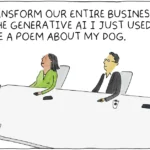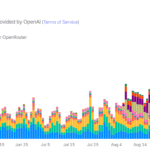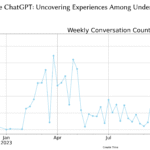Generative AI for business
It didn’t take long for Tom Fishburne’s cartoon to come true: Generative AI is increasingly treated as a magic trick. Most tricks aren’t really useful or truly “real,” yet they remain entertaining until we figure out, often the hard way, how the illusion is performed.
My conversations show that some executives are cautiously optimistic, integrating only what is truly useful into their business processes and project workstreams, while others are applauding the tricks and wanting more. The former group is already AI-literate, using machine learning and algorithms to augment and automate processes in the broader, more accurate definition of AI. The latter, more easily impressed group, seems to lack this foundation.
We can expect that more of the applauding executives will eventually join the cautiously optimistic ones once the magic show ends and we move past the peak of the hype cycle.






